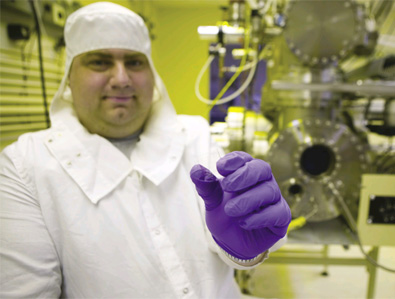 In early 2006, OSU researchers announced that they had created a completely transparent integrated circuit from inorganic compounds.
In early 2006, OSU researchers announced that they had created a completely transparent integrated circuit from inorganic compounds.
Now, reports the Corvallis Gazette Times, that technology has found its first industrial use in solar panels:
Silicon-based solar cells — the heavy black panels currently in use — require mechanical devices to pivot them and track the sun across the sky. Transparent transistors can do that optically, making the sandwich of lenses, cells and electronics much lighter.
And since most of the panel is clear, architectural elements such as color and texture can show through them, opening up the technology to become an integral part of a building’s design.
(In the photo: OSU graduate student Rick Presley was instrumental in creating the transparent integrated circuit.)


